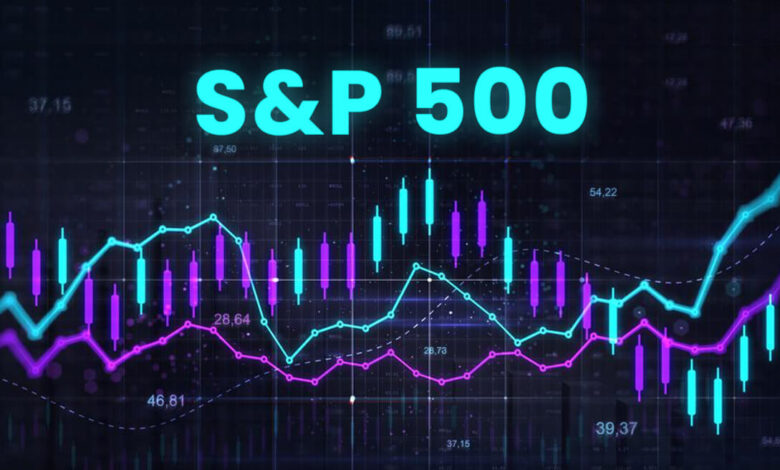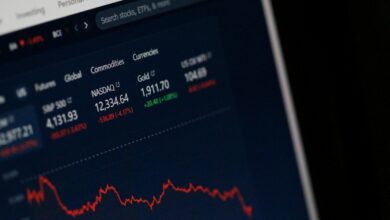What is the S&P 500 Index?

The S&P 500 measures the stock prices of more than 500 of the largest publicly traded companies in the United States to help investors answer the question, “How is the stock market performing?” Standard & Poor’s is a financial services company best known for the iconic stock market index it created in 1957: the S&P 500 (ticker symbol “SPX”). This index’s formula summarizes the stock prices of 500 companies from a variety of industries into a single number to quickly answer the question, “How is the U.S. stock market performing?” It is weighted using each company’s value by market capitalization, so the largest and most valuable companies drive the index more, making it a more useful reflection of the U.S. stock market. The S&P 500 is one of the most popular and widely used investment indices for tracking stock market performance. Learn more about the S&P 500.
What is the S&P 500 Index?
Index members
More than 500 publicly traded US companies by market capitalization are included in the S&P 500. As of June 2019, the maximum size was $3.7 billion in market capitalization. Companies worth $3.7 billion or more are eligible to be included. These companies must be headquartered in the United States, have publicly traded shares available for everyone to buy or sell, and have been profitable in the past year. That’s right, highly valued, unprofitable companies are not eligible for inclusion in the S&P 500, even though their value is among the top 500 US public companies. The 500 members represent approximately 80% of all publicly traded stocks in the United States. S&P Dow Jones Indices, the index administrator, always has the final say on membership.
S&P Index Calculation
Moving from multiple numbers to a single number requires some calculations. The S&P 500 is weighted by market capitalization—the total value of all of a company’s shares (calculated by multiplying the share price by the number of outstanding shares).
The S&P 500 follows a relatively simple formula: The numerator is the sum of all the market caps (values) of its 500 members. The person doing the calculating is a confidential figure that S&P does not disclose to the public. It’s important to understand that the stock prices of 500 companies drive the S&P 500 up or down, and that companies with the highest market capitalization (also known as the most valuable companies) have the greatest weight in moving the index.
How to calculate a company’s weight in the S&P index
Apple , Microsoft , and Amazon , the first three companies to reach $1 trillion in market caps, have high weightings in the S&P 500, so their stock movements impact the index more than less valuable companies .
To calculate a company’s weight in the S&P 500, divide the company’s market capitalization by the total market capitalization of the S&P 500. For example, a company with a market capitalization of $50 billion when the total market capitalization of the S&P 500 is $5 trillion has a weight of 1%.
What is the benefit of the S&P 500 index?
This index measures how stocks are performing. Because the S&P 500 captures 80% of the available public stocks in the United States, it’s a useful measure of how the U.S. stock market is performing overall. This index can benefit you in several ways. Let’s explore them now:
- It’s a good benchmark for evaluating your portfolio: To assess whether your portfolio is performing well, you can look at its raw return percentage (up or down). But the relative performance of the S&P 500 is a more accurate way to do this. Comparing your portfolio’s performance to the S&P 500 is a good way to assess whether your portfolio is outperforming the market. One alternative to building your own portfolio is to simply “track the S&P 500.”
- Some mutual funds track this index: Many investors prefer not to pick their own stocks, preferring instead to invest broadly in the U.S. stock market. A simple way to do this is by purchasing shares in a mutual fund, or ETF. Many mutual funds are created with underlying stocks that mimic the composition of the S&P 500. This way, with a single purchase, an investor can own a portion of the S&P 500 and benefit from its rise or fall just as the S&P 500 does.
The difference between the S&P index and other indices
S &P vs. Dow Jones
Both the Dow Jones Industrial Average (the Dow) and the Standard & Poor’s 500 Index are used to measure overall stock market performance. However, there are some key differences between the two:
- Number of companies covered
The Dow is so exclusive that joining it is like being knighted by the Queen. While this brings prestige to the 30 Dow members, it also weakens the Dow as a measure of the overall stock market. What happens to the stocks of the 30 largest companies is not necessarily the same as what happens to the entire market.
The S&P 500 tells us everything, and it includes 500 companies. It is more comprehensive and better equipped to answer the key question, “What happened to the stock market today?”
- The way stocks are weighted
The Dow Index’s weighting of companies was approximately 25,000 as of May 2019. This number was calculated using the index method, based on 30 stocks, with weighting based on share price. Therefore, the company with the highest share price in dollar terms has the largest weight and, therefore, will have the greatest impact on the index.
On the other hand, the S&P 500 is weighted by market capitalization. Market capitalization weighting makes more sense because market capitalization accounts for both the share price and the number of shares outstanding. The Dow Jones Index’s weighting represents only one of these, and share price alone is not the best measure of what matters in the stock market.
Companies with a higher stock price influence the Dow Jones Index more than others, while companies with a higher market capitalization influence the S&P 500 Index more than others.
The difference between these two indicators can be summarized as follows:
S&P 500 = Market Cap Weighted = Stock Price + Shares Outstanding
Dow = weighted by stock price only
S&P vs. Nasdaq
The S&P 500 is a broad-based index that includes companies from most sectors and provides a good cross-section of US stocks. The Nasdaq is more skewed toward technology stocks. For this reason, the S&P 500 is a more accurate proxy for the US stock market, while the Nasdaq is a more accurate proxy for the technology sector.
What are the limits of the S & P 500 index?
It is not an accurate measure of economic well-being. The S&P 500 is often cited to reflect the performance of the US stock market. Sometimes commentators take it a step further, interpreting its performance as a reflection of the US economy. While the S&P 500 does affect the well-being of Americans, it is only one factor.
Since stock prices are driven primarily by companies’ ability to generate profits, the S&P 500 will tend to rise as corporate profits rise. However, corporate profits are not necessarily related to workers’ incomes or economic happiness.
However, because the stocks of companies in the S&P 500 are owned by millions of Americans, an increase in the S&P 500 indirectly increases the wealth of Americans, and vice versa.
While the S&P 500 includes 80% of all publicly traded stocks in America, it does not include small companies, private companies, or even medium-sized or large-cap companies. For this reason, it is important not to interpret the S&P 500’s performance as including companies and sectors not represented in it.




